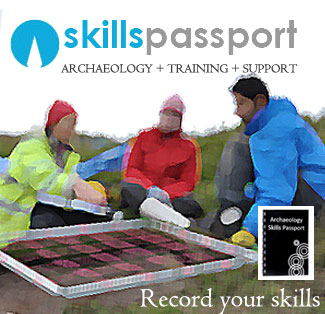Finds and artefacts that survive in the archaeological record are retrieved in the main by hand and observation as the context they survive in is excavated. Recognising the various types of finds and sub types within artefact group is important to allow the appropriate retrieval of an artefact be undertaken from lifting the item to storage and preparation for removal from site. From fragile material such as woods or other organics or bulk finds like ceramics or perhaps animal bones, you will be able to access and carry out the course of action that best suits the situation.
PRINCIPLE: Understands the recording, safe excavation and storage of artefacts of various materials and fragility.
- Novice – Recognises various artefact types, but would require full supervision and instruction before attempting to lift more complex items.
- Competent – With minimal instruction and supervision, is able to recognise the appropriate method for lifting and handling/packing of an artefact.
- Proficient – Can confidently use the best tool to remove artefact and use the appropriate storage box or bag for the material and type of find.
Professional tips:
Never use a tool that is harder than the material you are lifting, always carry wooden tool or brushes for delicate finds
If you can’t lift it without breaking, then consider block lifting. This will allow it to be easier excavated off site where more controlled work can take place.
Bag it, box it or into a tray. the three options that you must consider.
Always consider tne option is to call in a specialist conservator.
A rule of thumb – a small find is something that when you find, it is notable enough for you to tell someone- your 5000th sherd of amphora would pass without comment, but a sherd with a name stamp or graffiti would be a small find.
Don’t put flints in a bag together, then tend to knock together and create more flakes!
Get to know your pottery – it helps to know what and when you are digging!
If it looks fragile, it more than likely is. Photograph it before trying to lift it.
Archaeological Conservation
These guidelines are aimed at archaeologists, finds specialists and museum curators who are involved in the planning and publication of archaeological projects with an expected finds assemblage, as well as finds liaison officers and other museum staff advising metal detectorists.
They provide advice on good conservation practice and indicate what project managers should expect from conservation practitioners. They do not provide detailed practical conservation advice for fieldwork, and should be viewed as companion to other texts such as ‘First Aid for Finds’ Watkinson and Neal 2001: Sadly now sold out
Artefact conservation guide
This guide has been produced by Drakon Heritage and Conservation, on behalf of the Portable Antiquities Scheme:


